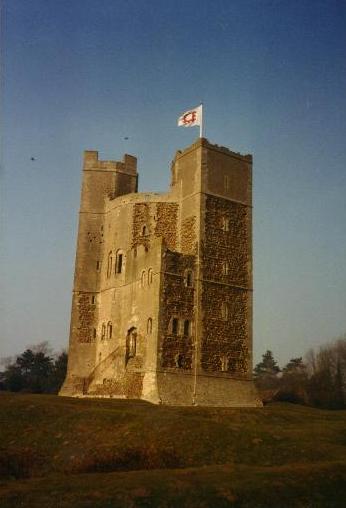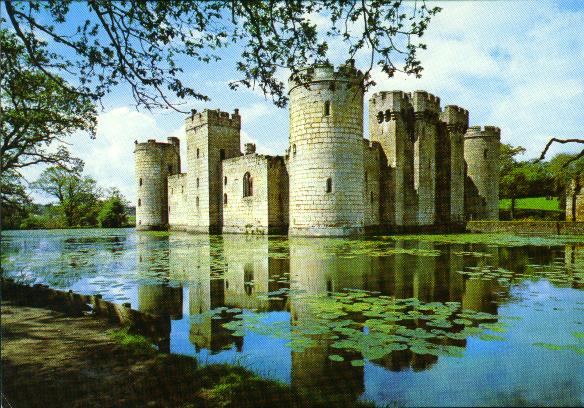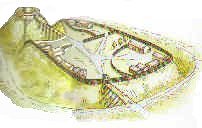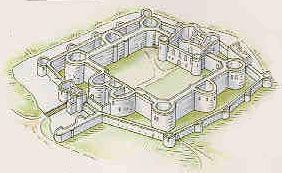 |
The construction of the first castle in Medieval England was completed in 1066 A.D., almost one thousand years ago. The castle was a safe place where the lord of the land, his family, and his servants could take shelter if attacked. The lord could be either a king or lesser baron. Building a castle could take years. The person who commissioned its construction sometimes did not even live to see it completed. Often times, kings had to stop the work on their castle when they ran out of money. These vast castles were designed by engineers and built by unskilled laborers. Edward I of England forced local peasants and prisoners to work on his castle building sites. These engineers chose sites that would be easy to defend, such as steep cliffs, riverbanks, and rocky coasts. |

This is Bodium Castle in England.
|
|
The first castles, built from timber and earthwork, were called motte-and-baileys. A motte was a high mound of earth, or hilltop, on which stood a tower, the last line of defense in an attack. A ditch or moat surrounded the hill and heaped the earth and soil into walls, called ramparts, to keep enemies out. A gateway, guarded by the king�s men, led to an enclosed area, known as the bailey. These timber castles were quick, easy, and inexpensive. However, they were vulnerable to battering and burning. |
|
|
By the eleventh century, these wooden towers were replaced with stone. These were often referred to as tower keeps. Building in stone allowed the architects to develop better ideas for making the castle a safe place to live. Blocks of stone were lifted into place with manpower hoists, since there were no cranes. Mortar held the stones together. Stone is much stronger than wood, and also fireproof. These stone structures had fortifications in each corner and a stone curtain wall with a large gatehouse surrounded a great tower, or keep. These castles were raised stone by stone at a rate of about ten feet per year. The only equipment castle builders employed were wheelbarrows and a pulley-wheel crane, which hoisted materials into place. |
|
|
By the end of the thirteenth century, most new castles were constructed with no keep at all. Instead, the buildings inside were protected by two sets of curtain walls, the inner wall higher than the outer wall. These were called concentric castles. Castle walls could be as thick as twenty feet! |
Camelot is almost always described as a massive stone castle with towers and turrets, a moat, and a drawbridge. When Geoffrey of Monmouth wrote of Arthur, that is how his own surroundings appeared. However, Geoffrey lived in the twelfth century and the Arthurian-age took place six hundred years before, when castles were very different. They were more like large hill forts of earth and stone, which even came before the motte-and-bailey version.



